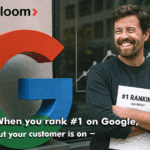Hi there,
A few weeks ago, I stumbled on a product I immediately loved—great formulation, clever messaging. They even had some solid reviews on marketplaces.
So, I Googled the brand to learn more…
& I found — nothing!….
Well not nothing….
Because I did finally find their website on Page 2. Buried under irrelevant links.
Turns out, they were spending big on ads, but had almost zero organic presence.
No SEO strategy.
Means no visibility.
Which means — no trust.
And it made me think—how many great brands are quietly losing because they’re stuck in an outdated SEO mindset?
Here’s the truth:
SEO isn’t about tricking the search engines anymore.
It’s about understanding people—and creating content so good that Google wants to show it.
If you’re still doing SEO like it’s 2018, you’re probably invisible in 2025.
Let’s break down what’s changed.
Here are The Top 7 Foundation Principles Of SEO and how they have changed in the last few years —

1. Old SEO Concept : SEO and UX are two separate things
New Strategy : UX is part of SEO
I’ve seen beautifully written blogs with zero traffic—because either they load slowly, are hard to navigate, or are simply unreadable on mobile.
And Google sees what your visitors see. If people leave your site quickly, your ranking will drop.
SEO today means fast, mobile-first, frustration-free. Clear fonts. Smart structure. Clean design. If your site isn’t usable, then no “SEO tricks” can save it.
2. Old SEO Concept : Just stuffed keywords everywhere
New Strategy : Search intent comes first
A client once asked me, “Should I repeat ‘best protein powder’ five times or ten?” I laughed and replied, “Why do you think the person searching for it in the first place?”
You see, today, SEO is not about repeating keywords anymore. Because search engines don’t just count words. They try to understand what the searcher really wants.
Using the keyword once or twice naturally is helpful. But repeating it again & again without adding any real value will not work anymore.
So yes, Google still sees keywords—but not in a vacuum. Now, it cares more about meaning, usefulness, and quality.
3. Old SEO Concept : Optimize for Google
New Strategy : Optimize for humans (& AI)
An eCommerce brand once asked us why their product pages weren’t ranking. They had titles, meta tags, and keywords everywhere—but the descriptions were too high level.
Once we rewrote them in plain, helpful language, added schema like FAQs, and organized the page better, their rankings rose.
So, when content is easy to read, useful, and well-structured, both people and AI understand it better. And that’s who you’re writing for now—humans first, machines second.
4. Old SEO Concept : Short SEO blogs
New Strategy : Long-form content that solves real problems
Earlier, people wrote 300–500 word blogs just to add some keywords and rank. It used to work. But not anymore.
Now, Google wants content that actually helps the reader. If someone searches for “how to reduce hair fall,” they don’t want 5 basic tips—they want to know causes, treatments, products, and real solutions.
Long-form blogs (1000+ words) that go deep into the topic, answer all possible questions, and give useful advice—that’s what ranks today.
In other words, don’t write to fill space. Write to solve.
5. Old SEO Concept : Guess what users want
New Strategy : Use data, behavior & feedback
Brands often assume what people want. They write content based on guesswork—no research, no data.
But that doesn’t work today.
Now, you have tools like Google Search Console, analytics, heatmaps, and even customer feedback. They tell you exactly what people are searching, where they drop off, and what they care about.
Instead of guessing, listen to your audience. See what they click, what they skip, and what questions they keep asking.
So, don’t assume. Just check the data. That’s how smart SEO works in 2025.
6. Old SEO Concept : Optimizing blogs is enough
New Strategy : Product pages, videos & FAQs matter too
Many brands still think SEO is only for blog posts.
In 2025, every content type matters: product pages, videos, even “About” sections.
We optimized thin product pages for one client with rich content—videos, reviews, comparisons—and their traffic soared!
So, if your product page has just a photo and price, that’s not enough.
Add helpful content—like reviews, comparisons, how-to videos, and clear FAQs—and Google will notice.
In other words, any page that helps the user, can rank. So optimize everything.
7. Old SEO Concept : One keyword per page
New Strategy : Topic clusters & semantic search
I once saw a client site with five different pages, targeting variations of the same keyword “vegan protein.” Each page was thin, competing with all the others, and none of them performed well.
So, we collapsed all of them into one solid guide on vegan protein—covering types, use cases, questions, and comparisons. Of course. Rankings surged.
You see, Google now looks for depth, not just keyword match. It values context, relationships, and coverage.
So instead of chasing single keywords, build topic hubs that will truly help the user.
So—What’s Your Next Move?
If your team is still following the old playbook, you’re playing yesterday’s game.
Now you have a real idea of what works in 2025. However, there are many more concepts and processes that are crucial to transform your brand by growing your traffic, content, and conversions.
At BrandLoom, we can help you move beyond guesswork and outdated tactics. Let us help you build a smart SEO plan that actually delivers.
Book a Free SEO Strategy Session
Here’s wishing you more clicks, better rankings, & real results.
P.S. Hope you read my last marketing story #73 – No Jargon. Just Facts – The Truth About Branding
That’s it for today, thanks for reading.
Yours Sincerely,

Avinash Chandra
Founder, BrandLoom Consulting
🌐 https://www.brandloom.com/
☎︎ +91-7669647020
📩 care@brandloom.com
💻 https://team.brandloom.com/book-a-meeting
1. Note: If you feel like talking, just hit reply on this mail.
2. Fun Fact: 82% of BrandLoom clients see an uptick of at least 20% in their revenue after the implementation of BrandLoom’s strategies.
BrandLoom Is Regularly Featured In :

Meet Us At:
Gurgaon. Mumbai. Pune. New Delhi. Bangalore. Texas. New York. London.


